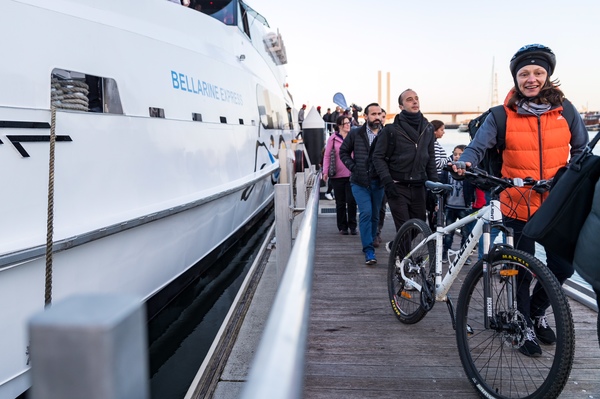A new Geelong-Melbourne ferry will cost passengers 55 per cent more than a train during a three-year trial, according to the operator.
Port Phillip Ferries’ website lists a return fare from Geelong at $36, about $12 more than a train.
But company chief executive officer Murray Rance described the ferry “an alternative” rather than a competitor to the train.
“It’s a far more comfortable ride,” he said.
“It’s a different experience: you’re guaranteed a seat, free Wi-Fi and that it’s not going to stop halfway.”
Regular commuters could save by purchasing 20 tickets at a time, with discounts for concessions and seniors, Mr Rance added.
The trial of the twice-daily return service will commence early next year after State Government pledged $6 million in support over three years.
But Mr Rance declined to reveal the overall operation costs for the period.
“That’s not a figure that should be disclosed,” he said.
“We’re operating the business as a private business after that (funding).”
The funding would contribute to overall costs, such as employing staff and marketing, he said.
At 30 knots an hour (55km/h) Port Phillip Ferries’ current vessel completes the trip in 100 minutes, roughly 40 minutes longer than the train.
But company owner Paul Little would invest about $10 million to design a faster ferry, which could slice 10 minutes from the trip, Mr Rance said.
“We haven’t arrived at a speed yet but we’re talking to engineers to increase that speed.”
Authorities have permitted the ferry to travel at 15 knots after entering the Yarra River at Williamstown, despite the eight-knot speed limit.
Mr Rance hoped to further increase that speed but acknowledged “safety is the most important thing”.
The ferry had completed the trip in under 95 minutes during a recent two-week trial, he added
The free trial attracted 2000 passengers, with 150 people travelling on the inaugural voyage and up to 300 taking the ferry in the afternoon, Mr Rance said.
He hoped the trial had encouraged commuters to change their habits.
“The reason we made the trials free is they never would have come on board if they had to try it for a fee.”
The ferry would need on average 200 to 300 passengers per day to make it viable after the three year trial, Mr Rance said.
“It’s a great experience and we’re very proud of it.”







